
In case you are interested in snapping black and white shots or you’ve even already tried taking them, you must have heard about monochrome vs grayscale photography.
Monochrome photography is distinguished by variations of a single color, for instance, the green or blue tones. The choice of color in a monochrome shot depends on the personal preferences of a photographer, but only one color is allowed.
Grayscale photography comprises black and white monochrome colors, with the use of varied gray tones. Unless you are a proficient photographer, you won’t spot any difference between b&w and grayscale shots. In fact, the word “grayscale” describes such shots more precisely.
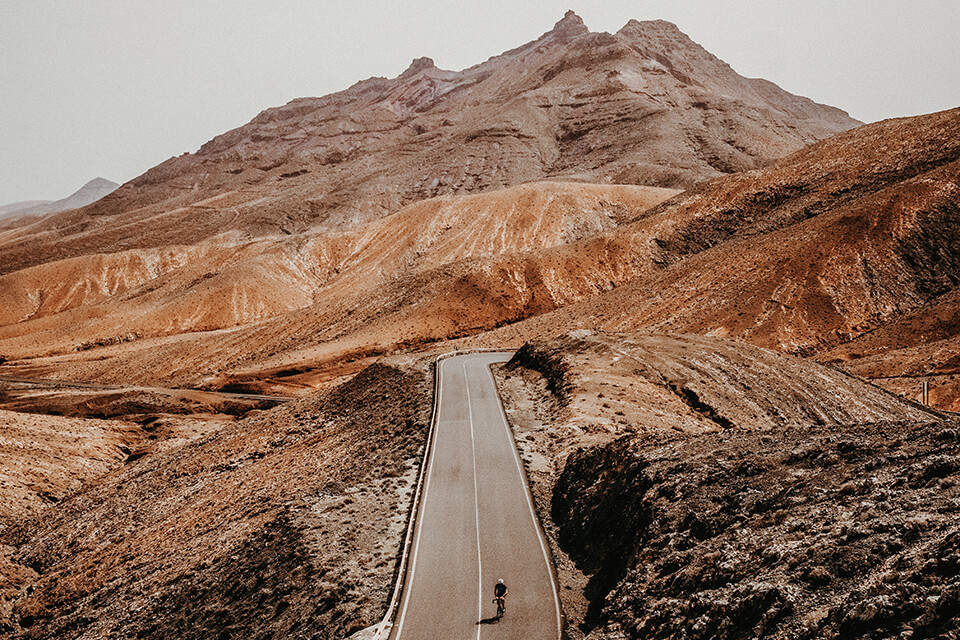
Monochrome photography employs varied volumes of light rather than varied colors while shooting. In comparison with traditional color photography (also referred to as polychrome), monochrome photography doesn’t use diverse colors from the entire color gamut. Instead, it is focused on one color and an array of shades of that color.
Black and white photography is the brightest representative of monochrome shooting style. It features neutral gray tones only and nothing else.
Among other examples of monochrome photography are sepia shots with their trademark chocolate-brown tones, which is a common color scheme for retro portraits. For the purpose of creative experiments, photographers may take cyan and even red monochrome shots.
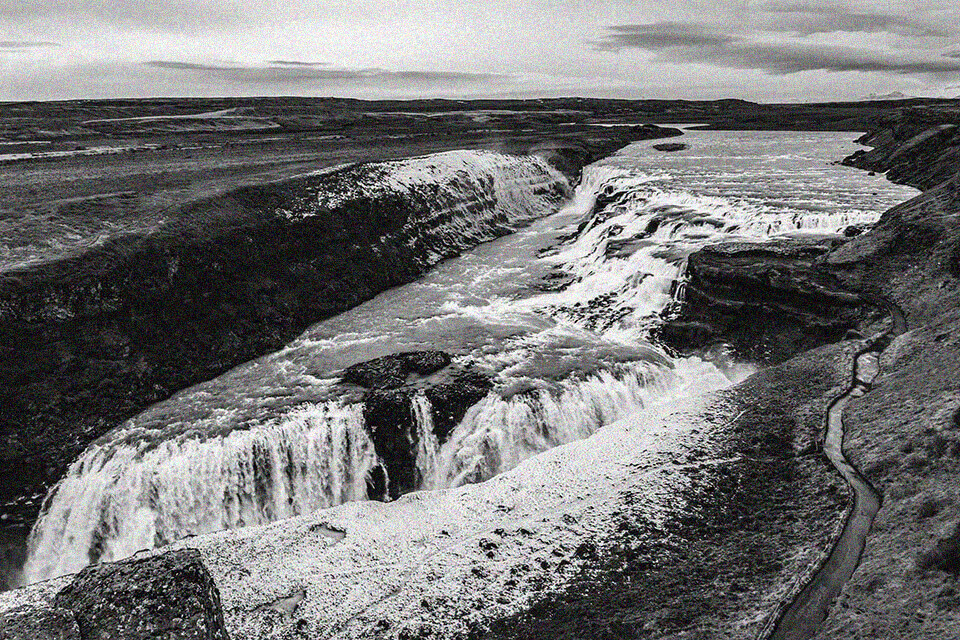
Grayscale is a more precise but not so well-known term used to refer to black and white shots. Technically, the word “grayscale” identifies a picture containing solely gray shades, with variations ranging from black to white.
Many photographers opt for grayscale photography because such shots clearly reflect forms, shapes and lines. Besides, grayscale shots emphasize texture. The use of gray tones helps set the mood and enhance the overall atmosphere in the shot.
It won’t be an issue to edit grayscale shots even on hardware that is compatible with 8-bit images exclusively. Grayscale printing matters a lot whenever you don’t want to deal with color prints, which are more difficult to process. Moreover, photo editing software often stores the data on how the shot is displayed in grayscale, similar to CMYK and RGB.
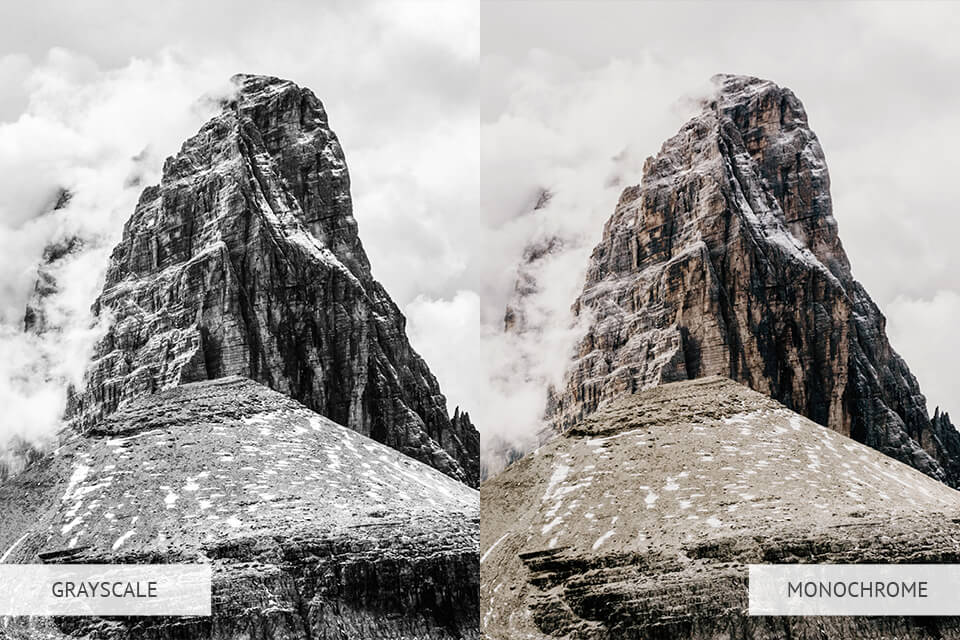
What is the difference between monochrome and grayscale? As a matter of fact, it is insignificant, and these two terms are used as synonyms quite often. Grayscale or b&w shots may be considered monochrome since they feature variations of a single color – black. But not every monochrome shot is considered a grayscale one as it may contain any color other than black.
For instance, a picture with a solely yellow color scheme is called a monochrome one. The choice of a suitable shooting style depends on numerous factors: what kind of mood you wish to convey, whether you wish to achieve the desired effect right after shooting or at the picture post-processing stage, whether you need to print the shots, etc.
My recommendation is to take colored shots no matter what the situation is and transform them into b&w ones afterwards. If you decide to shoot in black and white initially, the camera will do it in JPEG format, which may lack some significant data.
Regardless of whether you are looking to snap monochrome or grayscale shots, do it in RAW to achieve greater quality. RAW files offer comprehensive color information. The more pixels there are, the easier and more flexible it will be to retouch.
If you still need a JPEG version of the shot, feel free to take it in RAW and JPEG. By the way, when setting the camera to shoot in b&w, remember that this mode is called Monochrome in Nikon and Canon cameras.
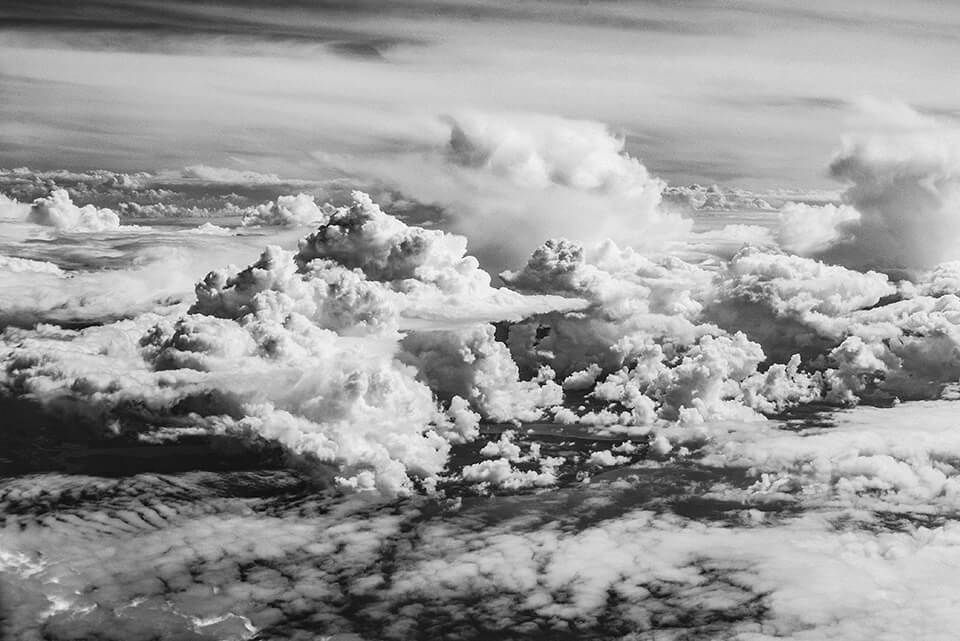
In order to snap a nature-inspired monochrome shot within the camera, try to feature the brightest and the darkest variations of the color in the shot. This will contribute to greater contrast in the photo.
To take a nice nature-inspired monochrome picture, start with a macro photograph of leaves in green tones. Or you may try snapping a shot of the mushroom’s reverse side in yellow-brown tones.
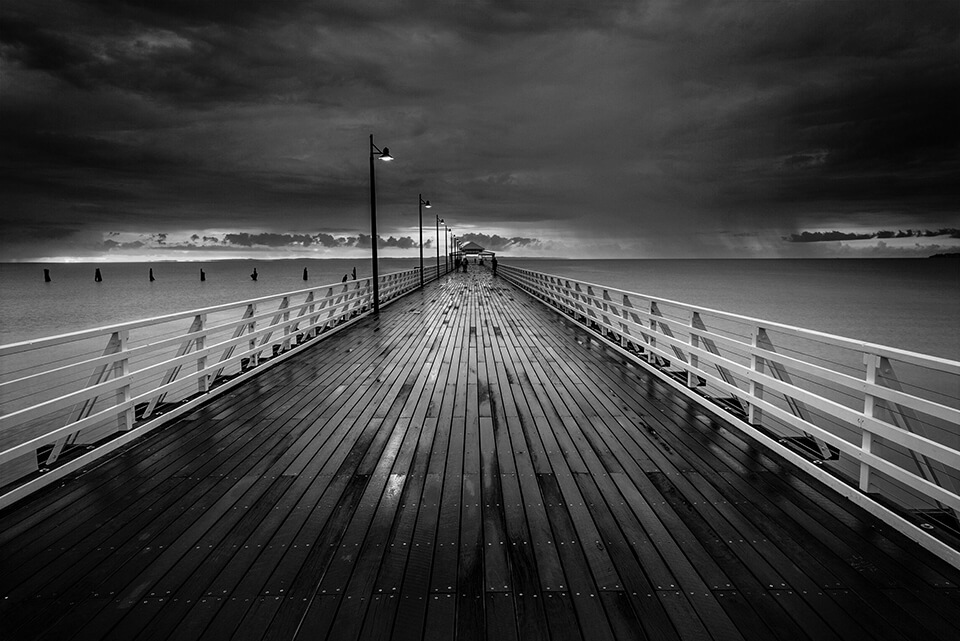
Grayscale photography is supposed to put emphasis on the details. In b&w photography, lines, symmetry and patterns are the elements that instantly catch the eye.
The secret of making monochrome and grayscale pics more captivating is adding texture. Here I’m talking about pics with a rich array of tones, for instance, woven fabric of a basket or separate grass blades.
When shooting in a black and white mode with a digital camera, you are lucky to see the lightness and tonal variations in real-time. With this data at your disposal, you are bound to snap more impressive b&w shots. However, in terms of creativity, it slightly restricts you. For instance, you won’t be able to bring back color in RAW images if you suddenly change your mind.
I recommend using a hybrid method to take both types of shots. It unites the processes of shooting and image editing, which becomes possible thanks to the camera’s sophisticated mirrorless technology. You will be shooting in the RAW format while still having access to a black and white preview. You will have a rough idea of what the final shot will look like. Then you can enhance it in the image editor.
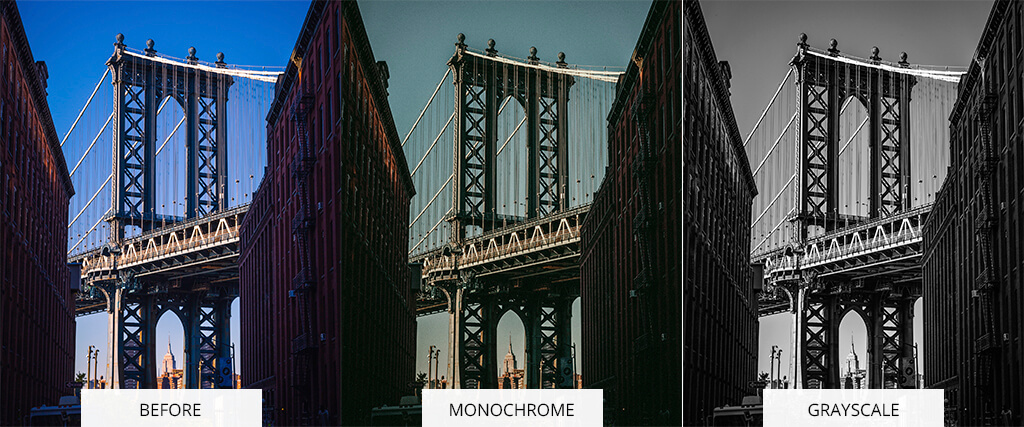
Image editing software let you post-process a photo and turn it into a monochrome or grayscale one. For that, snap a colored picture in a non-compressed RAW format. After that, convert the picture to a black and white one in dedicated software like Lightroom or Photoshop. This way, you will have both colored and b&w versions of one shot. Besides, you can experiment with b&w and monochrome variations however you like.
The process of editing black and white vs monochrome pictures doesn’t differ much. The main drawback is that you need to spend extra time creating a b&w picture, as well as figure out how to do it properly. To perform the black and white conversion in a single click, apply Monochrome Lightroom presets.
Another option is to take advantage of professional photo color correction services in order to alter the color scheme, add shadows and contrast to pics.
If you decide to minimize all colors to the level of single-color variations, monochrome will let the background pics look not so eye-catching compared with the subject in the center of the shot. Such photographs will appear romantic and even mysterious while grayscale photography in a similar style will have more drama.
Black and white photographs tend to be of a more dramatic, distinctive and contrasting nature, making the composition smoother and consolidated. Grayscale photographs are more inclined towards a classic vibe, adding that historical and everlasting element to shots.
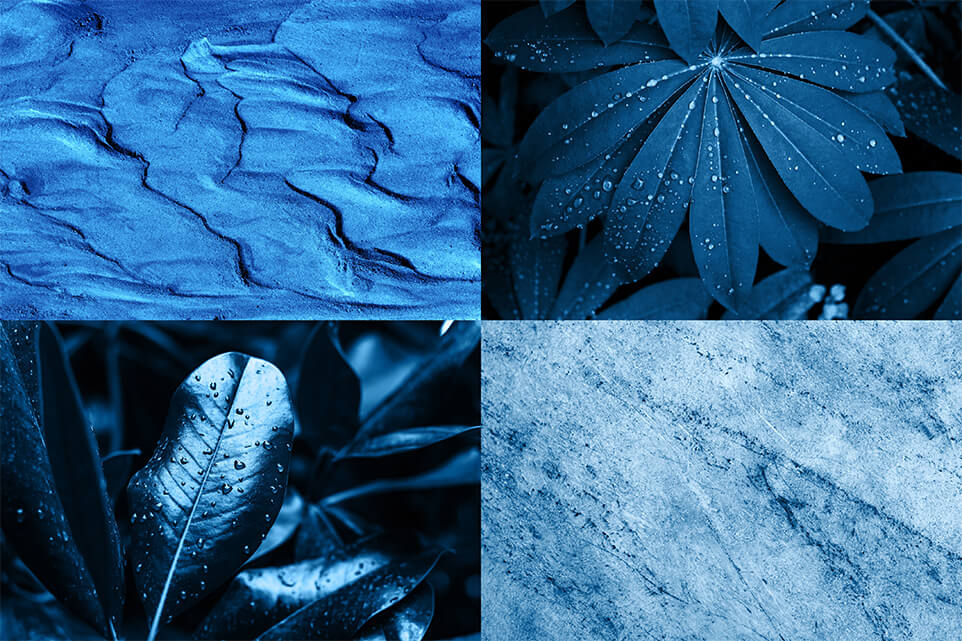
For a perfect monochrome picture, try focusing on a prominent subject that is likely to attract the viewers’ attention. If the subject is clearly distinguished, it will lead the monochrome shot in the right direction while also highlighting the foreground. This technique enhances macro photography, especially plant shots. Besides, it adds depth to landscape pics.
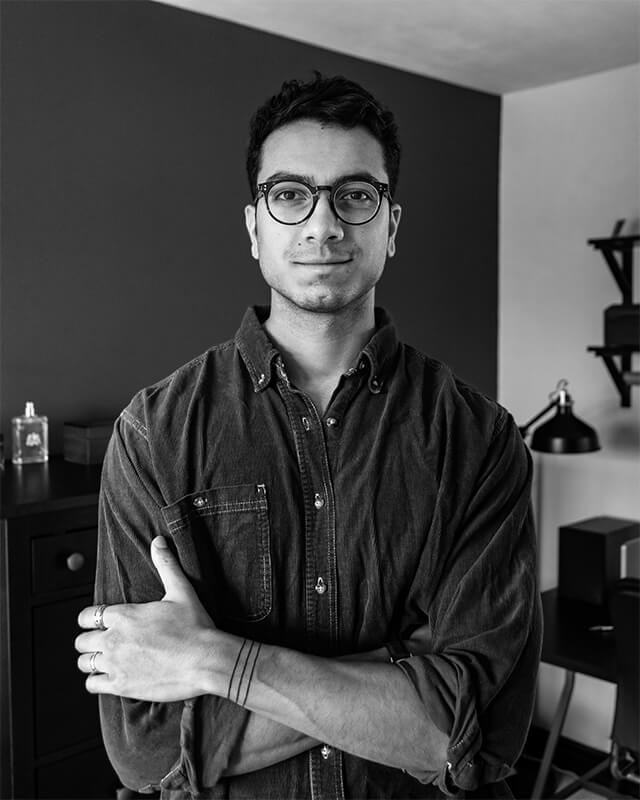
In the case of grayscale photography, this technique transforms portrait photography. Shades of gray emphasize the shape of the face, show texture and details. Besides, having to eliminate distracting elements from the shot is a solid reason for converting it to grayscale.
Transport, architecture, trees, weather and landscapes can also be affected by grayscale photography.
Comparing monochrome vs grayscale photography in terms of printing, the first will require more ink. This is connected to the fact that monochrome pictures employ colors to create blacks and whites. As for grayscale, only a black ink cartridge is used for printing grey tones.
Grayscale and monochrome aren’t that different from each other and identify whether the photographer limits or eliminates color from the picture. Monochrome photographs feature solely one color, but this may be a black and white shot or a color filter.
Color filters apply a sole color to a b&w shot to push the details to employ varied tones of that color and achieve the eye-grabbing effect. This technique transforms macro photography and landscape shots, making them more mysterious and spectacular.
Speaking of grayscale, it describes the monochrome color scheme with the use of gray tonal variations. In case you are after a nice black and white picture, grayscale will hit the spot for you. Besides, this technique contributes to a richer, deeper and more detailed shot.
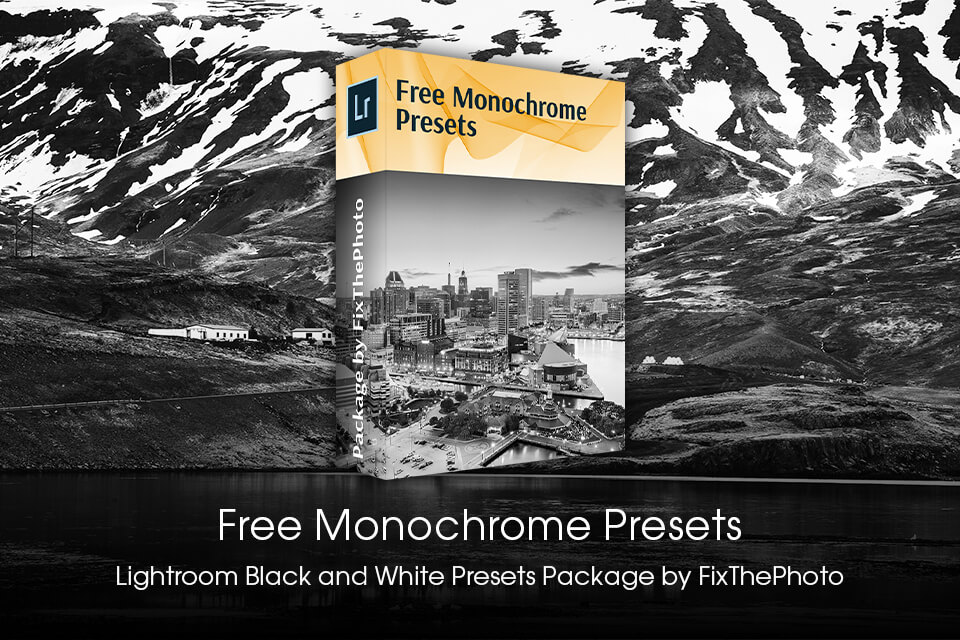
To turn a colored picture into a monochrome or b&w one, apply these presets. The FixThePhoto experts have prepared a collection of over 320 free tools to help you change the mood of a picture in no time. These presets are compatible with Lr 4-6, Lr CC, Lr Classic and Lr Mobile. They are equally suitable for RAW and JPG pictures.